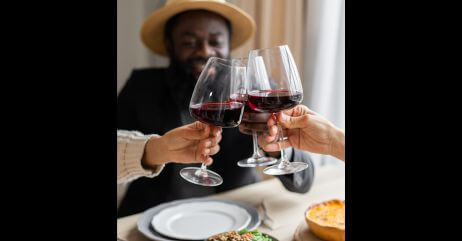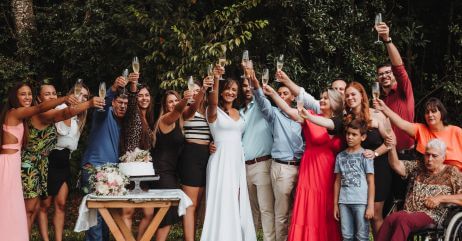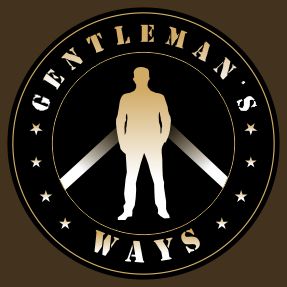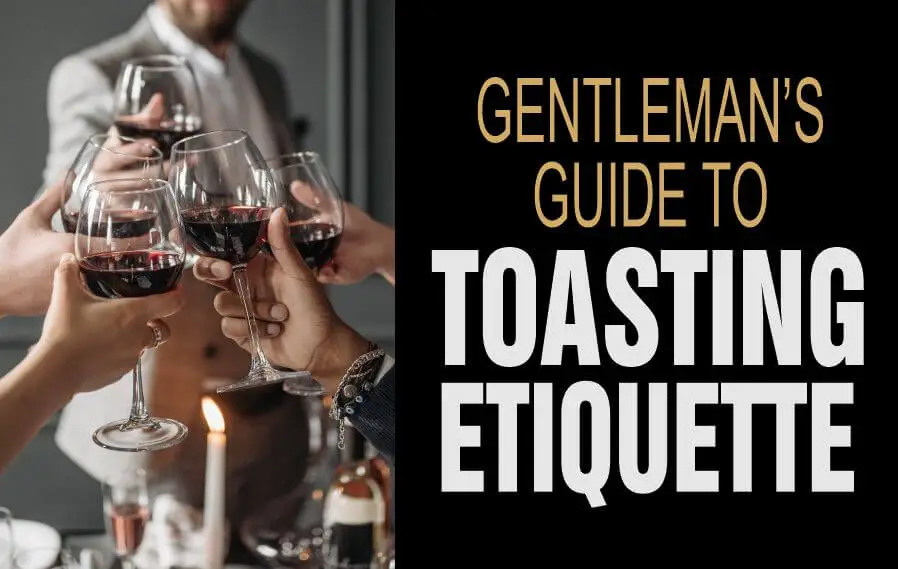A true gentleman knows that raising a glass is not a mere gesture but a statement of celebration, and that makes the toasting etiquette sacrosanct.
I found myself boxed into a corner when I was asked to conduct a toast at a friend’s wedding as I was his best man.
I was giving the notice in 30 minutes and I searched the net for the procedure but with the tension and the urgency, I couldn’t find something meaningful.
As a gentleman who should be good at improvising, I was able to put some words together and conducted a toast for a successful life together and happily ever after.
But it was a bad experience, I wasn’t prepared and I hate to be taken unawares.
This experience pushed me to go searching for the proper way to conduct a toast as one of the dining etiquettes and guidelines.
And I am putting the information as an article today.
I know many gentlemen find themselves in such situations. This post will help you understand the essence of toast etiquette and a momentary Toastmaster.
You will want to read the introduction to gentleman’s etiquette.
Table of Contents
- What is Toasting Etiquette?
- Who is a Toastmaster?
- The Art of Making a Toast
- Before the Toast: Preparing and Getting Ready
- Best Man Speech Etiquette
- Toasting Etiquette 101
- Performing the Toastmaster Job on Different Occasions as a Gentleman
- Toasting Traditions Around the World
- Responding to a Toast as a Gentleman
- Handling Non-alcoholic Toasts by the Gentleman
- Toasting Faux Pas to Avoid by the Gentleman
- Technology and Toasting Etiquette
- The Dos and Don’ts of Toasting Etiquette
- Conclusion
- Frequently Asked Questions on Toasting Etiquette
What is Toasting Etiquette?
Toasting in an event is a tradition of raising a glass, typically filled with wine, to honour and celebrate a specific occasion, person, or milestone.
It serves as a gesture of respect, gratitude, and camaraderie among attendees.
Often led by the host or a designated speaker cum toastmaster. Toasting involves offering a brief and heartfelt speech and expressing good wishes or sentiments.
Guests usually respond by clinking glasses and taking a sip.
Toasting etiquette can vary depending on cultural norms and the nature of the event, but their essence remains the same: promoting unity and joyous celebration among those present.
Toasting etiquette is the correct procedure to conduct a toast according to an event and is usually done by the Master of Ceremony or a Toastmaster.
Someone can also be picked to conduct the toast, but it’s always in good taste to include the toasting in the program of events and inform the would-be Toastmaster ahead of time.
Related: Gentleman’s Guide to Napkin Etiquette
Who is a Toastmaster?

A toastmaster is an individual designated to conduct a toast at an event.
He may also be the Master of Ceremony to lead and oversee the proceedings of a formal gathering keeping the event on track and maintaining the appropriate atmosphere.
The Toastmaster holds the responsibility of ensuring the event runs smoothly, introducing speakers, managing the schedule, and proposing toasts.
He often has excellent public speaking skills, ensuring smooth transitions between different segments of the event.
But he might also be a random person picked in a small gathering.
A toastmaster’s presence adds a touch of professionalism, grace, and order to the occasion, contributing to a memorable and enjoyable experience for all attendees.
Related: The Gentleman’s Walking Etiquette
The Art of Making a Toast

Every gentleman should be able to make a toast the right way.
Understanding the significance of the occasion and the feelings associated with it helps craft a more meaningful and appropriate toast.
Here are tips for being an effective Toastmaster:
- Be prepared: Plan and practice your toast beforehand to ensure it flows smoothly and avoids rambling.
- Keep it concise: A good toast is brief, capturing the essence of the message in a few minutes.
- Be positive and sincere: Express genuine emotions and heartfelt thoughts, making the audience feel connected.
- Make eye contact: Engage with the audience to establish a personal connection.
- Use humor judiciously: Injecting light-hearted humor can add charm, but avoid offensive or inappropriate jokes.
- Avoid controversial topics: Keep the focus on the celebration and avoid sensitive or divisive subjects.
- Raise your glass last: As the toastmaster, wait for others to raise their glasses before you do.
Related: Gentleman’s Guide to Observing Social Media Etiquette
Crafting a Heartfelt and Memorable Toast
- Start with an attention-grabbing opening: Set the tone and captivate the audience from the beginning.
- Share personal anecdotes or memories: Relatable stories create an emotional connection.
- Express gratitude and appreciation: Acknowledge the importance of the occasion or the person being celebrated.
- Use vivid language and imagery: Paint a picture with words to make the toast memorable.
- Include a toast to the future: Express hopes and good wishes for what lies ahead.
- End with a strong closing: Conclude with a powerful line that leaves a lasting impression and encourages others to raise their glasses.
By following these tips and infusing your personality into the toast, you can make it a heartwarming and cherished moment for everyone involved as a true gentleman.
Related: Gentleman’s Guide to Wine Guidelines
Before the Toast: Preparing and Getting Ready
To deliver a successful toast, preparation, and timing are crucial.
Here’s what I consider appropriate:
Choosing the Right Moment to Propose a Toast
Select a moment when all or most guests are present and attentive.
Typically, toasts are proposed after everyone has been seated and served their drinks but before the main course is served or the event’s focal point begins (like cutting a cake).
Look for a natural break in the event’s flow to ensure that the toast doesn’t disrupt the proceedings.
Related: Gentleman’s Guide to Etiquette Online
Ensuring Everyone Has a Drink for Toasting
Before proposing the toast, a gentleman should ensure that all guests have a filled glass, whether with alcoholic or non-alcoholic beverages.
It’s essential to be inclusive, and if someone doesn’t have an alcoholic drink, make sure to have a non-alcoholic option available to them.
Gathering the Attention of the Guests
To gather everyone’s attention, you can do the following:
- Stand up or be in a visible position.
- Use a gentle clinking sound with a utensil against your glass to signal that you’re about to propose a toast.
- Speak clearly and confidently, so your voice carries across the room and commands attention.
- Make eye contact with the audience to establish a connection and hold their focus.
By being well-prepared, thoughtful, and attentive to the needs of the guests, you can set the stage for a successful and enjoyable toast that everyone will remember fondly.
Related: Shaking Hands the Professional Way
Best Man Speech Etiquette
As a gentleman delivering a best man speech, observe utmost respect and sincerity.
Keep the speech positive, avoiding any crude humor or offensive remarks. Express heartfelt appreciation for the couple, their love, and their journey together.
Aim for a concise speech of 3-5 minutes to maintain guests’ interest. Rehearse diligently to ensure a confident and smooth delivery.
Share light-hearted, meaningful stories about the couple to add a personal touch.
Acknowledge and thank the guests and hosts for their presence. Conclude with a toast to the couple’s happiness and future.
Following these etiquette guidelines will make your best man speech a cherished and enjoyable moment at the wedding.
Toasting Etiquette 101

Toasting etiquette is an essential skill for gentlemen to uphold during social gatherings.
Here’s a guide to navigating the art of toasting:
Holding and Raising the Glass Correctly
When holding a glass for toasting, use the stem or the base, especially for wine glasses, to avoid warming the contents.
Hold the glass at a comfortable angle, about chest level, and raise it smoothly during the toast, avoiding any abrupt movements. Be mindful not to clink glasses too forcefully to prevent spills or breakage.
Maintaining Eye Contact During the Toast
While proposing or participating in a toast, maintain eye contact with the other guests to establish a personal connection and convey sincerity.
Avoid looking down at your glass or around the room too much, as it may be interpreted as disinterest.
Related: Guide to RSVPing for Gentlemen
Keeping the Toast Brief and On-topic
Gentlemen should aim for concise toasts that capture the essence of the occasion or the person being celebrated.
Avoid lengthy or meandering speeches that may lose the audience’s interest.
Stay on-topic, express positive sentiments, and avoid bringing up unrelated or controversial subjects that could dampen the celebratory atmosphere.
Performing the Toastmaster Job on Different Occasions as a Gentleman
As a gentleman, taking on the role of a toastmaster on various occasions requires poise, tact, and adaptability.
Here’s how to handle toasting duties at different events:
Toasting at Weddings and Engagements
At weddings and engagements, the toastmaster should bring an air of elegance and warmth.
Introduce speakers with charm and ensure the toasts are heartfelt, emphasizing the couple’s love and journey together.
Toasts may include wishes for a blissful life, expressing gratitude to family and friends, and acknowledging the significance of the occasion.
Related: How to Observe Personal Boundaries as a Gentleman
Toasting at Formal Business Events
In formal business events, a gentleman toastmaster should exude professionalism and confidence.
Introduce speakers with brief and respectful remarks, highlighting their achievements and contributions.
Toasts may focus on milestones, recognizing team efforts, and expressing appreciation for partnerships.
It is essential to maintain a sense of decorum and avoid controversial or overly personal topics.
Toasting at Family Gatherings and Holidays
At family gatherings and holidays, the toastmaster should create a warm and inclusive atmosphere.
Toasts can center around family values, gratitude for shared memories, and wishes for continued happiness.
Be attentive to different generations’ sentiments and cultural nuances, keeping the toasts light-hearted and relatable for everyone present.
Generally, a gentleman toastmaster, being well-prepared, considerate, and adaptable to each occasion’s tone and significance will contribute to the success of the event and create cherished memories for all attendees.
Toasting Traditions Around the World

Toasting customs vary significantly across cultures, each adding its unique flair to the art of celebrating.
Some common global toasting traditions include:
Raising glasses: Universally, toasting involves raising glasses and clinking them together before taking a sip, symbolizing unity and friendship.
Special occasions: Different cultures have specific toasting customs for various events like weddings, birthdays, holidays, and business gatherings.
Toastmaster role: Some cultures designate a specific person to lead the toasts, similar to a master of ceremonies.
Toasting gestures: In some places, toasting includes additional gestures, like tapping the table with utensils or raising the glass three times.
Also Read: Gentleman’s Guide to Hand-kissing
Cultural Variations in Toasting Customs
Each culture has its rules and traditions regarding toasting.
For example, in Japan, it’s customary to pour drinks for others rather than oneself, while in France, toasting wine is prevalent.
Understanding these variations is essential to avoid inadvertently causing offense and to participate respectfully in foreign customs.
Learning About Toasting Gestures and Sayings Globally
Learning about different toasting gestures and sayings worldwide helps a gentleman embrace cultural diversity and connect with people from various backgrounds.
For example, in Germany, one might say “Prost!” whereas in Italy, it’s “Salute!” Knowing these phrases promotes a sense of camaraderie and understanding.
Respecting and Adapting to Different Traditions
When attending events in foreign cultures, it’s crucial to respect and adapt to their toasting customs.
Observe how locals raise their glasses, clink or don’t clink, and follow their lead.
Being open to new experiences enriches one’s understanding of global customs and enhances cross-cultural interactions.
As a gentleman, when you appreciate and embrace toasting traditions around the world, you can cultivate a deeper appreciation for cultural diversity and forge meaningful connections with people from different backgrounds.
Related: Gentleman’s Guide to Elegant Dressing
Responding to a Toast as a Gentleman
As a gentleman, responding to a toast requires graciousness and eloquence.
Here’s how to handle it with finesse:
Listen attentively: When someone toasts to you or an event, listen carefully and maintain eye contact with the person making the toast.
Stand and acknowledge: In formal settings, stand up to show respect and appreciation for the gesture.
Keep it brief: Respond with a brief message of gratitude and appreciation, keeping the focus on the person who proposed the toast or the significance of the occasion.
Be sincere: Express genuine emotions and thank the individual or the group for their kind words or good wishes.
Return the gesture (optional): You may propose a toast in return, acknowledging the presence of the guests and celebrating the occasion further.
Use appropriate language: Tailor your response to the formality of the event and the relationship with the person making the toast.
Related: Gentleman’s Gifting Etiquette
The Proper Way to Respond to a Toast in Different Settings
In various settings, the response may vary. For formal business events, maintain a professional demeanor and thank colleagues or partners for their support.
In more personal settings, like weddings or family gatherings, express heartfelt appreciation and share sentiments about the significance of the occasion.
Expressing Gratitude and Appreciation
Expressing genuine gratitude is essential in your response. Acknowledge the kind words and good wishes conveyed in the toast.
You can also thank those involved in organizing the event or people who have played significant roles in making it memorable.
Adding to the Celebratory Atmosphere
In your response, contribute to the celebratory atmosphere by sharing positive thoughts, uplifting stories, or humorous anecdotes related to the occasion.
Your words can further enhance the joy and unity among the guests.
Handling Non-alcoholic Toasts by the Gentleman
As a gentleman, handling non-alcoholic toasts with grace and inclusivity is essential for creating a welcoming environment for all guests, including non-drinkers.
I have been to many events where the toast was conducted with non-alcoholic wine reflecting the faith of the host, especially religious events.
There are many non-alcoholic alternatives to consider.
Here’s how to approach it:
Tips for Toasting with Non-alcoholic Beverages
Choose appealing alternatives: Offer a variety of non-alcoholic beverages, such as sparkling water, mocktails, or fruit juices, so non-drinkers have enticing options to toast with.
Treat non-alcoholic toasts with the same respect: Whether guests raise glasses with alcoholic or non-alcoholic drinks, treat both toasts equally in terms of attention and appreciation.
Avoid drawing attention: Don’t draw attention to someone’s choice of a non-alcoholic drink; let them toast discreetly without feeling self-conscious.
Making Non-drinkers Feel Included and Comfortable
Create a welcoming atmosphere: Enhance an environment where guests feel comfortable expressing their beverage preferences without judgment or pressure.
Be considerate in conversation: Avoid questioning non-drinkers about their choices or making them feel excluded by centering discussions on alcoholic beverages.
Emphasize camaraderie: Highlight that toasting is about celebrating together, irrespective of the beverage in hand, emphasizing the shared joy of the occasion.
Raising Awareness about Responsible Drinking
Lead by example: As a gentleman, demonstrate responsible drinking behavior to encourage others to follow suit.
Offer information: Provide details about the non-alcoholic options available, promoting responsible choices and moderation during the event.
Educate others: When appropriate, raise awareness about responsible drinking practices and the importance of offering non-alcoholic alternatives at social gatherings.
Toasting Faux Pas to Avoid by the Gentleman
As a gentleman, avoiding toasting faux pas is crucial to maintain a positive and respectful atmosphere during social gatherings.
Here are some common mistakes to be mindful of:
- Using inappropriate language or humor: Avoid making jokes or using language that may offend or make others uncomfortable during a toast.
- Overindulging in alcohol: Excessive drinking can lead to slurred speech, and inappropriate behavior, and overshadow the purpose of the toast.
- Upstaging others: Refrain from turning a toast into a lengthy speech that dominates the event, taking away from other speakers or the occasion itself.
- Discussing sensitive or controversial topics: Keep the toast focused on the celebration and avoid bringing up divisive issues or personal matters.
Dealing with Awkward Situations Gracefully
If you witness a guest committing a toasting faux pas, avoid drawing attention to it or making them feel embarrassed.
Instead, focus on the positive aspects of the occasion and continue with the festivities.
If appropriate, offer support or encouragement to the individual to ease any discomfort.
Apologizing for Unintended Slip-ups
If you find yourself making a toasting mistake, such as a poorly chosen joke or a misstep in your speech, address it gracefully.
Simply acknowledge the error, apologize if necessary, and swiftly move on with the toast, redirecting the focus back to the occasion or the person being celebrated.
By being aware of potential toasting faux pas and handling awkward situations with tact and grace, a gentleman can ensure that toasts are enjoyable, respectful, and meaningful experiences for all participants.
Technology and Toasting Etiquette
Technology has revolutionized the way we communicate and connect with others, even when it comes to traditional practices like toasting.
With the advent of virtual gatherings, technology has allowed us to continue this tradition in a digital format which requires virtual toasting etiquette.
Proper Etiquette for Toasting in Virtual Gatherings
Announce the toast: In a virtual gathering, it’s important to let everyone know that a toast is about to happen. This can be done by using the chat feature or verbally announcing it.
Raise your glass: Just like in a physical gathering, raise your glass to signify that you are participating in the toast.
Mute your microphone: To avoid any background noise or interruptions, it’s courteous to mute your microphone while others are speaking.
Keep it concise: Virtual toasts should be shorter than those in physical gatherings. Aim for a toast that lasts no longer than a minute to maintain engagement and avoid losing the attention of participants.
Engage visually: Make eye contact with the camera to create a sense of connection with the other participants. This helps to maintain engagement and make the toast feel more personal.
Making Virtual Toasts Feel Personal and Meaningful
Prepare in advance: Take some time to think about what you want to say and prepare your toast in advance. This allows you to express your thoughts clearly and make the toast more meaningful.
Use personal anecdotes: Incorporate personal stories or memories related to the person or occasion being celebrated. This adds a personal touch and makes the toast feel more intimate.
Express genuine emotions: Be sincere and express your genuine emotions during the toast. This helps to create a heartfelt and meaningful moment, even in a virtual setting.
Use visual aids: Utilize technology to enhance your virtual toast. You can share photos, videos, or slideshows that are relevant to the occasion, making the toast more engaging and personal.
Challenges and Solutions for Digital Toasting
Lack of physical presence: One of the main challenges of virtual toasting is the absence of physical presence, which can make it feel less intimate. To overcome this, participants can make an effort to engage visually, maintain eye contact with the camera, and use personal anecdotes to create a sense of connection.
Technical difficulties: Technical issues such as poor audio or video quality, lag, or dropped connections can disrupt the flow of a virtual toast. It’s important to ensure a stable internet connection and test the technology beforehand to minimize these issues.
Time delays: In virtual gatherings, there may be time delays between participants due to internet latency. To avoid awkward interruptions or overlapping speeches, it’s helpful to establish a clear order for toasting and allow for brief pauses between speakers.
Distractions and multitasking: Participants in virtual gatherings may be more prone to distractions or multitasking, which can detract from the impact of a toast. Encourage participants to be fully present and engaged during the toast by requesting that they minimize distractions and focus on the moment.
Embracing technology and following proper internet toasting etiquette, virtual toasting can still be a meaningful and enjoyable experience, allowing us to celebrate and connect with others, regardless of physical distance.
The Dos and Don’ts of Toasting Etiquette
There are dos and don’ts of toasting etiquette as listed below. Most of them have already been explaining above but here is a summary.
The Dos
Expressing sincerity: Be genuine and heartfelt when proposing or responding to a toast, conveying authentic emotions and appreciation.
Celebrating: Use the toast to honour and celebrate the occasion or the person being recognized, emphasizing the positive aspects of the moment.
Spreading joy: Create a warm and joyful atmosphere during the toast, uplifting the spirits of those present and enhancing a sense of unity.
The Don’ts
Avoid controversial topics: Steer clear of discussing divisive issues or sensitive subjects during the toast to maintain a harmonious atmosphere.
Excessive drinking: Practice moderation when drinking, as excessive alcohol consumption can lead to inappropriate behavior and diminish the significance of the toast.
Summary of Key Toasting Etiquette Guidelines
- Make eye contact and raise your glass properly during the toast.
- Keep your toast concise, focused, and on-topic, avoiding rambling speeches.
- Choose appropriate language and avoid offensive or inappropriate remarks.
- Pay attention to cultural norms and traditions when toasting in different settings.
- Adapt toasting behavior based on the formality of the occasion.
- Include non-drinkers in the toast and offer non-alcoholic alternatives.
- Be a gracious listener when others propose toasts.
Conclusion
The gentleman’s guide to toasting etiquette emphasizes the significance of this time-honoured tradition.
Toasting etiquette exemplifies respect, unity, and celebration, promoting warm connections during social gatherings.
Embracing the art of toasting allows gentlemen to showcase their poise and sincerity, making every occasion more memorable and meaningful.
Let us raise our glasses with grace and goodwill, cherishing the moments of joy, gratitude, and camaraderie that toasting brings.
By adhering to these guidelines, we can create a positive and inclusive atmosphere, honouring the past while forging lasting bonds for a bright and harmonious future.
Cheers to embracing the timeless art of toasting!
Frequently Asked Questions on Toasting Etiquette
What do you say before a toast?
Before a toast, you can get everyone’s attention and begin by saying, “May I have your attention, please?” or simply raise your glass and smile, signaling that you are about to propose a toast.
How do you give a proper toast?
To give a proper toast, be sincere and concise. Stand confidently, maintain eye contact, and speak with clarity. Express genuine sentiments, celebrate the occasion or person, and raise your glass to emphasize unity and joy.
What do you say after a toast?
After a toast, respond with gratitude and appreciation, such as “Thank you for the kind words and good wishes.” Raise your glass, clink with others, and take a sip to acknowledge the toast and the celebratory moment.
What are three things a person should do when giving a toast?
Be prepared: Plan and practice the toast to convey the message effectively.
Be sincere and positive: Express genuine emotions and celebrate the occasion or person with enthusiasm.
Maintain eye contact: Establish a personal connection with the audience to make the toast more engaging and heartfelt.
References:
Pyo Merez is a men’s lifestyle enthusiast and writer about the gentleman’s place and impact on society. Raised by a distinguished gentleman dad, he offers unique insights into how the mind of a gentleman works and how societal norms shape gentlemen’s identity and vice versa.
Through his insightful articles, Pyo taps into the depths of gentleman culture to provide perspectives on etiquette and manners in modern society.

